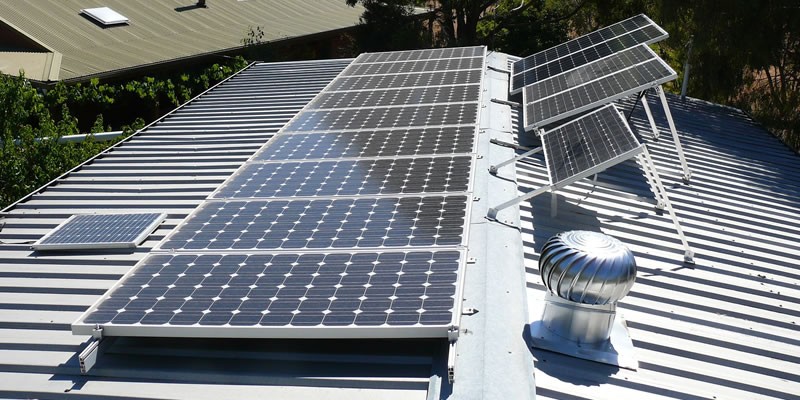Harnessing solar energy through panels offers numerous benefits, such as reducing electricity bills, lowering carbon footprint, and enjoying potential tax incentives. Solar panels are a sustainable and renewable energy solution that can contribute to a greener future.
The demand for solar energy is on the rise, and for good reason. With increasing environmental awareness and technological advancements, more people are opting to embrace solar power. It’s a clean, reliable, and cost-effective alternative to conventional energy sources, making it a popular choice for homeowners and businesses alike.
Assessing Your Roof’s Suitability for Solar Panels
Assessing Your Roof’s Strength
Before considering the installation of solar panels, it is crucial to evaluate the structural integrity of your roof. A sturdy and well-maintained roof is essential to ensure the panels can be safely installed and supported. Look for signs of damage, such as leaks, sagging, or rotting materials. Consider consulting a professional roofing contractor to thoroughly inspect your roof and provide an expert assessment.
Maximizing Solar Energy Efficiency
Another important factor to consider when replacing a conventional roof with solar panels is the orientation and tilt of your roof. For optimal energy generation, your roof should have a favorable orientation towards the sun, typically facing south in the northern hemisphere or north in the southern hemisphere. Additionally, the tilt angle of your roof should be adjusted to maximize solar exposure throughout the day. A reputable solar panel installer can help analyze these aspects and recommend the best positioning for your panels.
Determining the Roof Space for Solar Panel Installation
Before proceeding with the installation, you need to determine if your roof has sufficient area to accommodate the desired number of solar panels. This evaluation is essential as it directly impacts the feasibility and effectiveness of the solar system. Take into account the dimensions and shape of your roof, considering any obstructions such as chimneys, vents, or skylights. It’s also important to factor in the optimal orientation and tilt angle for solar panel placement, maximizing sun exposure.
Steps to Replace a Conventional Roof with Solar Panels
Engaging with a Solar Installer
To replace your conventional roof with solar panels, the first step is to engage with a professional solar installer. Working with a qualified installer ensures that the installation process goes smoothly and adheres to all necessary regulations and safety standards. The installer will assess your roof’s suitability for solar panel installation, taking into account factors such as orientation, shading, and structural integrity. They will also help you determine the appropriate size and type of solar panel system for your energy needs.
Removing the Existing Roof
Once you have engaged with a solar installer, the next step is to remove the existing roof. This process involves careful planning and coordination to ensure a seamless transition. The installer will work with a team of skilled professionals to safely remove the old roof while minimizing disruption to your home. They will dispose of the old roofing materials responsibly, following local regulations and environmental guidelines. Removing the existing roof prepares the foundation for the solar panel installation, allowing for a fresh start and optimal performance of the solar system.
Installing the Solar Panel System
Begin by inspecting the roof’s structural integrity and making any necessary repairs or reinforcements. Then, install the mounting hardware securely on the roof to provide a stable foundation for the solar panels. Carefully position and connect the panels, ensuring they are aligned correctly. Afterward, install the electrical wiring, connecting the panels to an inverter that converts solar energy into usable electricity. Finally, conduct a thorough inspection and testing to verify the system’s proper functionality. Remember to enlist the expertise of professional installers to guarantee a safe and efficient process.
Post-Installation Considerations and Maintenance
Solar Panel Performance Monitoring
Monitor the performance of your solar panel system to ensure optimal energy production. Keep an eye on the system’s output through a monitoring platform or app provided by your installer. Regularly check the data for any unusual fluctuations or drop in production, which could indicate a malfunctioning panel or an issue with the system. By staying vigilant and addressing any performance issues promptly, you can maximize the benefits of your solar panels.
Cleaning and Maintenance
Regular maintenance and cleaning are essential to keep your solar panels in top condition. Inspect the panels periodically for debris, such as leaves or dirt, and remove them gently using a soft brush or a non-abrasive cloth. If you live in an area with heavy pollution or dust, consider cleaning the panels more frequently. However, avoid using harsh chemicals or abrasive materials that can damage the panels’ surface. Additionally, inspect the mounting system and wiring to ensure they are secure and functioning correctly.
Maximizing Solar Energy Benefits and Management
To fully optimize the advantages of solar energy, it is crucial to adopt proper usage and effective energy management strategies. This entails being mindful of how you consume electricity and implementing practices that maximize solar power utilization. By monitoring your energy consumption patterns, you can identify peak usage hours and adjust your activities accordingly, such as running high-energy appliances during periods of maximum solar production. Additionally, investing in energy-efficient appliances and technologies can significantly reduce your overall energy demand. Regular maintenance of your solar panels is also essential to ensure optimal performance. This includes cleaning the panels periodically to remove any dirt or debris that may hinder sunlight absorption.
Solar energy is a sustainable and renewable solution that paves the way for a greener future. With the increasing demand for solar power and advancements in technology, more individuals are embracing this clean and cost-effective alternative. By assessing your roof’s suitability, engaging with a professional solar installer, and following proper installation and maintenance practices, you can harness the full potential of solar energy. Maximizing solar energy benefits through effective usage and energy management further enhances the advantages of your solar panel system. With careful planning and consideration, you can make a positive impact on the environment while enjoying the long-term advantages of solar power.
Publisher’s Details:
Best Roofing
15500 Erwin St Suite #1001, Van Nuys, CA 91411
(866) 430-7318
info@bestroofingla.com
bestroofingla.com
If you’re considering a shingle roof for your home, check out: Advantages Of Getting A Shingle Roof Installed For Your Home, where it talks about the advantages of getting one installed. For top-tier reroofing services in Lancaster, CA, choose Best Roofing—they offer top-notch quality and expertise, with excellent customer service.










